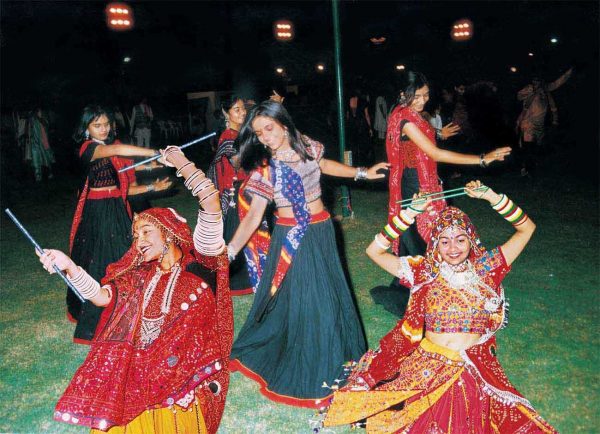It’s time for yet another festival in Goa. However, it’s not one that is native to Goa but rather, has been adopted and adapted by the sunshine state of India. We’re talking about Navratri. Navratri is a 9-day Hindu festival which is celebrated in October for a variety of reasons. Even the way it is celebrated differs all over the country. It actually has four seasonal Navratri but it is the post-monsoon autumn festival called Sharada Navratri that is the most observed, in honor of divine feminine Devi (Durga). And so, for the next 9 days, there will be dandiya dance competitions held all over the state. While this may be a festival with its origins in Gujarat/Rajasthan, Goa has quickly caught on and made it her own. These nine days will end with the festival of Dusshera.
Navratri celebrations across the country
Navratri is a celebration of good over evil with the goddess Durga or Lord Rama as the protagonist. As mentioned, this is a festival is celebrated all over India but depending on the region and place, the celebrations vary. In the eastern and north-eastern states, the goddess Durga holds focus, battling and emerging victorious over the buffalo demon to help restore Dharmam. Towards the northern and western states, it is Lord Rama’s battle and subsequent victory against the evil King Ravana that is celebrated. In Goa, this is symbolized by the burning of effigies of Ravana on the eve of Diwali and seemingly not seen anywhere else in the country. These effigies are known as Narkasurs.
Dandiya Raas
The festival of Navratri is celebrated in anticipation of Diwali, the festival of lights. During Navratri, there are Garba and Dandiya Raas dances held all over. Dandiya Raas is a traditional dance with its origins in Gujarat and Rajasthan. Goa has a large community of both Gujaratis and some Rajasthanis as well, making both Dandiya Raas and even Garba, very popular.
Dandiya Raas originated from devotional Garba dances, which were always performed in Goddess Durga’s honor. If one watches carefully and is already aware of the history, he will see this dance as a staging of a mock-battle between the goddess Durga and Mahishasura, the mighty demon-king. It is also known as the ‘Sword Dance’.
The Dance
There are various forms of Raas but “Dandiya Raas”, performed during Navaratri in Gujarat is the most popular form. In Dandiya Raas men and women dance in two circles, with sticks in their hands. The dance steps are intricate and require an even number of people in the performance. During the dance, dancers energetically whirl and move their feet and arms in a complicated, choreographed manner to the tune of the music with various rhythms. They hold short sticks in their hands which are supposed to imitate the swords of goddess Durga. Today, Raas is not only an important part of Navaratri in Gujarat but extends itself to other festivals related to harvest and crops as well.
The Costumes
Dandiya Raas is a very lively and entertaining dance. Men and women get dressed up in traditional outfits, some of which may be specially designed for a particular performance. The women wear colorfully embroidered choli, ghagra and bandhani dupattas which have mirror work and heavy jewelry. The men wear special turbans and kedias, but this can range from area to area.
Dandiya Raas is a fun and fascinating performance and is definitely worth attending wherever possible. It’s an event for not just the adults but the kids too who are taught these dance steps and have a great time.
Information credit
https://en.wikipedia.org/wiki/Navaratri
https://en.wikipedia.org/wiki/Dandiya_Raas
ItsGoa/OCT/KDGP


